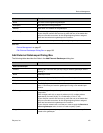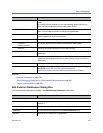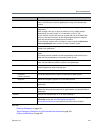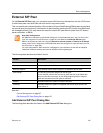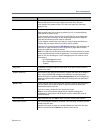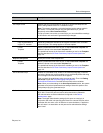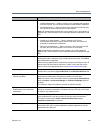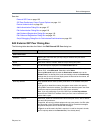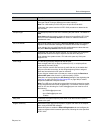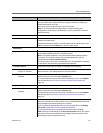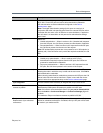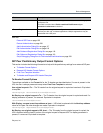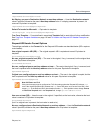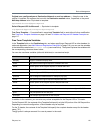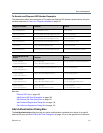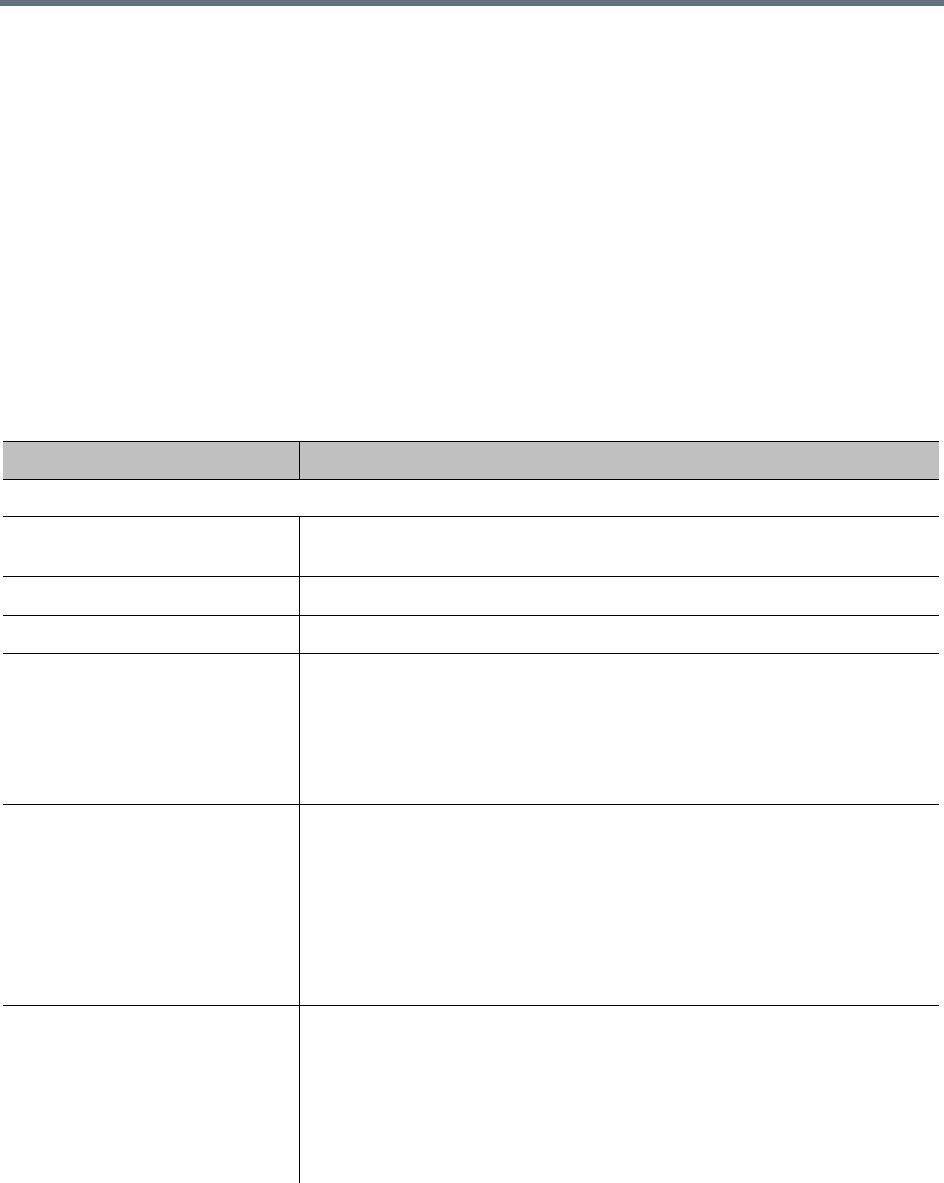
Device Management
Polycom, Inc. 110
See also:
External SIP Peer on page 105
SIP Peer Postliminary Output Format Options on page 114
Device Authentication on page 261
Add Authentication Dialog Box on page 117
Edit Authentication Dialog Box on page 118
Add Outbound Registration Dialog Box on page 118
Edit Outbound Registration Dialog Box on page 119
Script Debugging Dialog Box for Preliminaries/Postliminaries on page 254
Edit External SIP Peer Dialog Box
The following table describes the fields in the Edit External SIP Peer dialog box.
Field Description
External SIP Peer
Enabled Clearing this check box lets you stop using an external SIP peer server
without deleting it.
Name Peer server name or number. Must be unique among SIP peers.
Description The text description displayed in the External SIP Peer list.
Type For a Microsoft Office Communications Server, Lync Server 2010, or Lync
Server 2013, select Microsoft. Otherwise, select Other.
Selecting Microsoft implicitly adds the Destination network value to the
Domain List (if not already there) and automatically selects the Postliminary
settings that are correct for most deployments in Microsoft environments, but
you can modify them if necessary.
Next hop address Fully qualified domain name (FQDN), host name, or IP address of the peer
server.
If you specify a domain/host name, the system routes calls to this peer by
using DNS to resolve the address. The DNS server that the system uses must
contain the required records (NAPTR, SRV, and/or A/AAAA).
Note: If you are configuring a Lync 2013 SIP Peer, the Next hop address
should be the FQDN or IP address of the Lync Pool, not an individual Lync
server within a pool.
Destination network Host name, FQDN, or network domain label of the peer server, with or without
port and URL parameters.
If specified, this value by default replaces the non-user portion of a URL (after
the @ symbol) of the To header and Request-URI for forwarded messages,
and just the Request-URI for REGISTER messages.
If Type is set to Microsoft, this field is required, is used for the peer’s domain,
and is implicitly added to the Domain List (if not already there).



